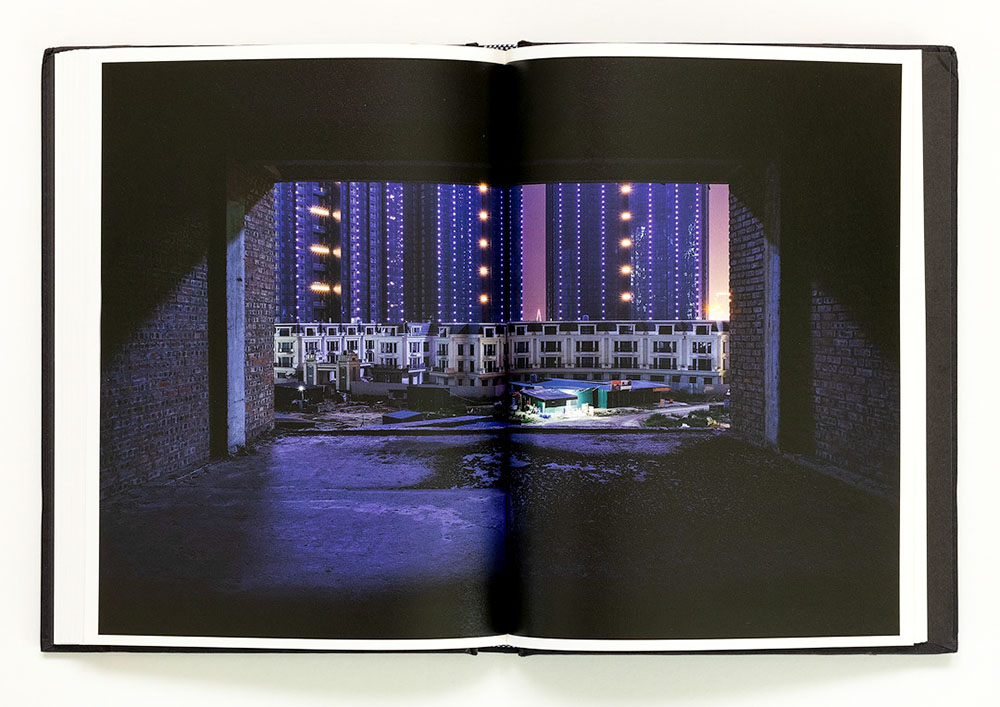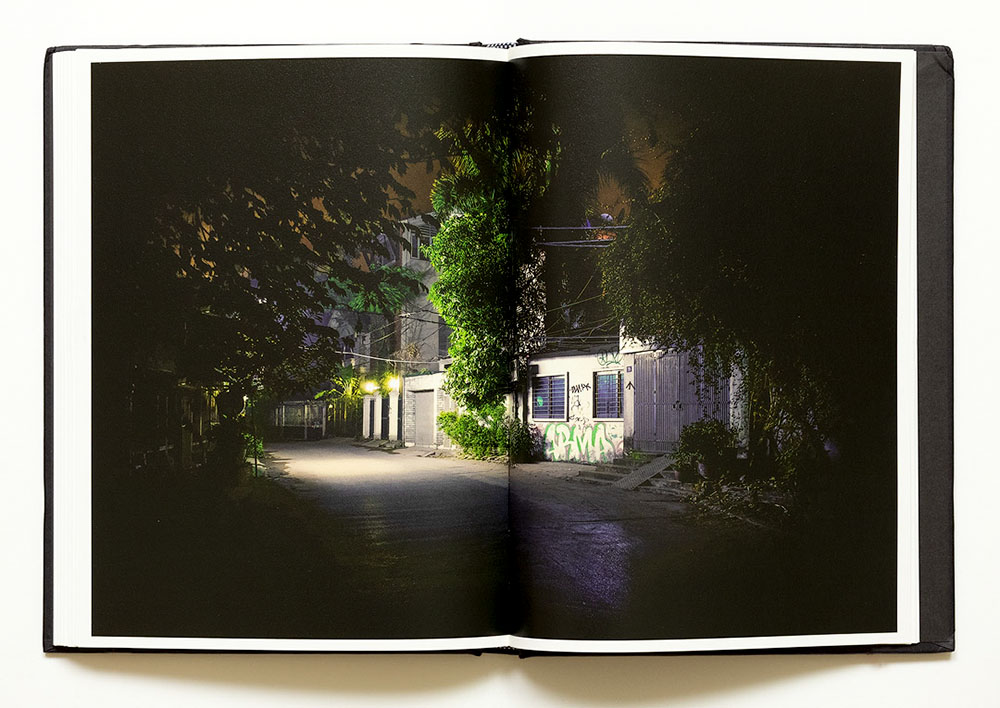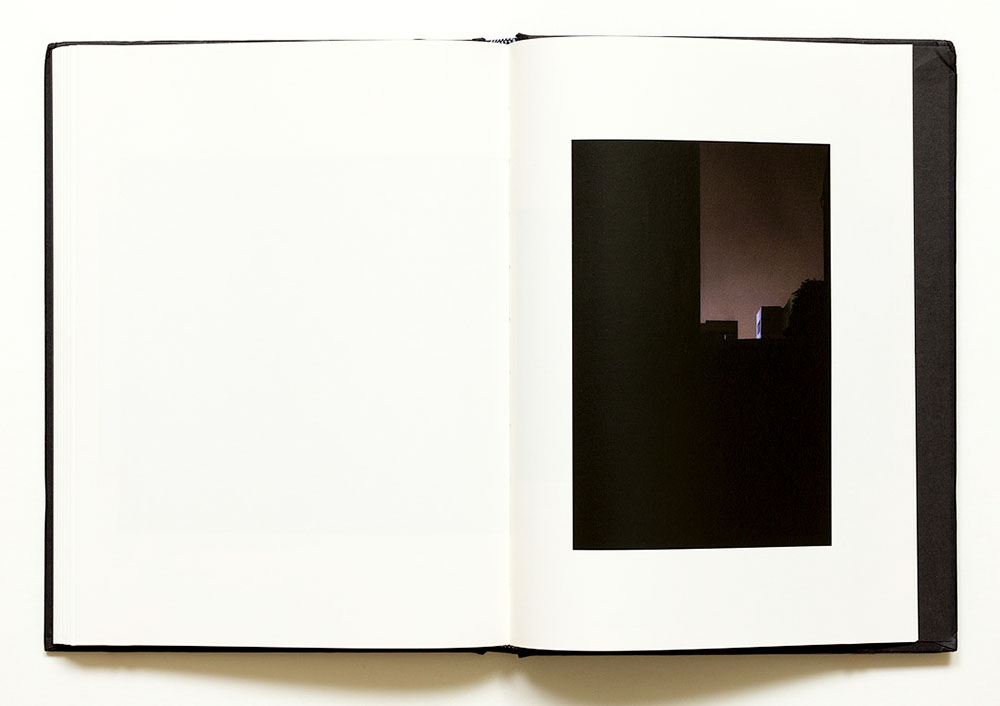
Review by Paul Anderson •
Deep purples and blacks, satiny reds, rich oranges- the night photography of Hanoi by Wouter Vanhees treats the reader to a rich range of colors that he finds in his well-composed urban night scenes. His is a unique look at a big city. The photographs are austere, lonely, and haunting. Some convey a sense of serenity as the big city settles in for the night. Others show strains of a city undergoing rapid expansion.
Wouter Vanhees was born and grew up in Belgium, moving to Hanoi in 2015. To explore his new city, he would set off at “10:43 p.m.” on Wednesday nights with his scooter, searching for interesting scenes. Vanhees says in his introductory essay that he searched for “lights, shadows, and colors that take me by surprise.” The 64 color images in this book are the result of these late-night wanderings.
In his most striking images, Vanhees places humble urban dwellings, construction sites, cemeteries, or rough undeveloped land in a darkened, unpopulated foreground, and lets the brightly lit newer residences tower in the background. This creates a strong sense of isolation between the viewer and the unseen persons living behind the brightly lit windows.
Hà Đào, who wrote an introductory essay, states that the photographed locations are not easily placed, that these are obscure. There is a sense of anonymity to the images. They might well have been taken in any number of densely populated Southeast Asian capital cities. She likens Vanhees’ photography to the New Topographics style that developed in the mid-1970’s. This style presented an austere, documentary, matter-of-fact vision of man-made objects. The analogy to Vanhees’ work is understandable, except that his use of color and composition lends these images a sense of haunting beauty, something not readily associated with that movement.
These are images of a deserted urban landscape. Human presence is, with the exception of one image, only inferred. Even modes of transportation, such as bicycles, scooters, cars and trucks are generally absent. As noted in a piece by Emilia Mickevicius on the New Topographics movement (Khan Academy), “By foregrounding, rather than erasing human presence, the photographs placed people into a stance of responsibility towards the landscape’s future…”, an observation that is quite applicable to this collection of photographs.
This reviewer has spent considerable time in Jakarta, the capital city of Indonesia. That city has areas of rapid and chaotic urban development that look very similar to the scenes depicted by Vanhees, making the images resonate with me. Decades of minimal urban planning combined with large-scale migration from all parts of Indonesia to its capital have resulted in hodgepodge cityscapes. With growing affluence, city dwellers seeking better accommodations are settling in high-rise buildings or upscale residences intertwined with older neighborhoods. The tension between old and new provides a rich source of material for the observant photographer.
The colors in the images are quite remarkable given that they are night scenes. Light sources scattered around any thriving urban area always come in a wide variety of colors. Rather than fight the color shifts of these lights, the photographer has embraced them and used these to great advantage. Along with the colors, there is a judicious use of empty space throughout the images, strengthening the compositions and emphasizing the nocturnal.
This is a comfortably sized book, and the size works to its advantage. The intimacy of the images plays well with the late-night settings. The book is nicely made and printed. The pages of photographs contain no page numbers, text, or image titles, giving it a very clean look. The print run is limited to 500 copies, each individually numbered and signed by the photographer.
This book should appeal to readers with an interest in urban landscapes, night photography, or those seeking a unique look at the recent rapid growth of Southeast Asian capital cities.
______
Hà Nội, Wouter Vanhees
Photographer: Wouter Vanhees, born in Belgium, lives in Hanoi
Essays: “Purple is the color of the night” by Hà Đào; “Hà Nội by Wouter Vanhees
Text: Vietnamese and English
Hardcover, 16 x 21.5 cm (6.3 by 8.5 inches), 144 pages, 64 color photographs; 500 copies signed and numbered.
Director & Chief Editor: Mai Thị Thanh Hằng
Editor: Bùi Thị Phúóng Thuý
Graphic Designer: Nguyễn Duy Quang
Photo Editor: Linh Phạm
____










Articles and photographs published on PhotoBook Journal may not be reproduced without the permission of the PhotoBook Journal staff and the photographer(s).